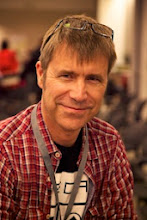Apple’s sales record here is even more impressive if you factor in that iPad is a new class of device, somewhere between the phones and computers that most consumers understand. It’s also a category of device that’s vexed every vendor who’s tried to enter this space over the last decade.
So how did Apple do it? Why did Apple succeed where no one else has and how did they do it so quickly?
The answer is, it took a decade of education and teaching. The key to Apple’s success is that the company often takes the time to explain things to the consumer that no other vendor bothers to do. By keeping a laser focus on key features and introducing them one at a time over a period of years, Apple taught and evangelized everything the consumer needed to know to understand the iPad from day one. Without that foundation, it’s not likely the product would have been nearly the success it has been.
Full post http://www.macworld.com/article/151606/2010/05/gartenberg_ipad.html
Excellent description of the magic of creating new consumer markets through gradual familiarity.
